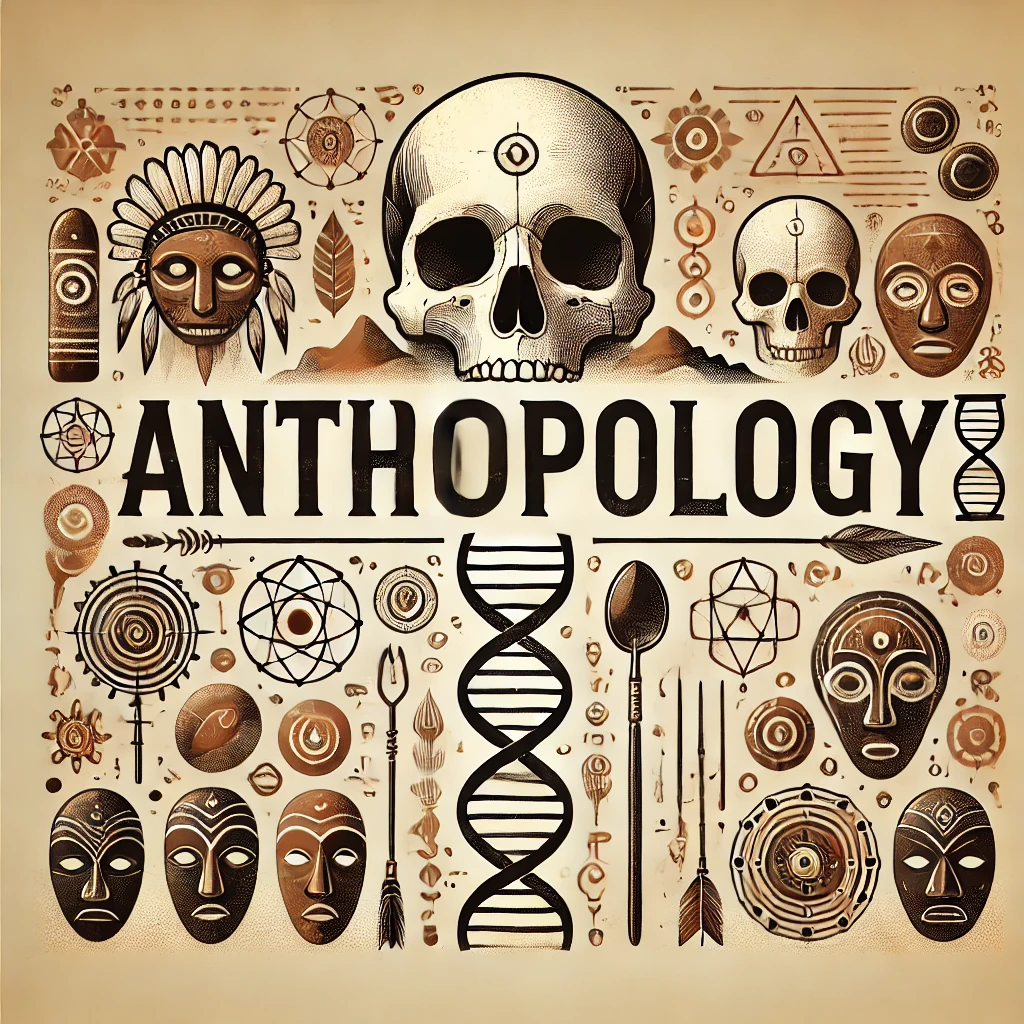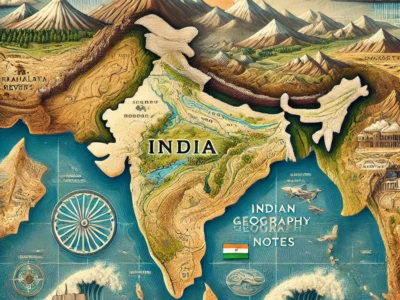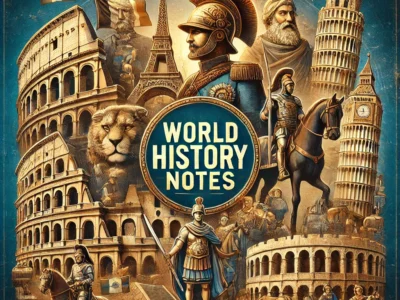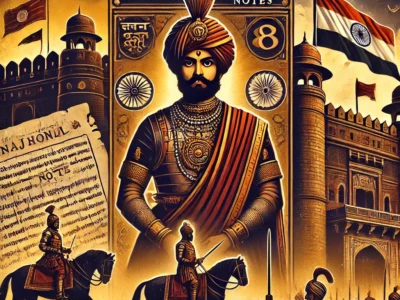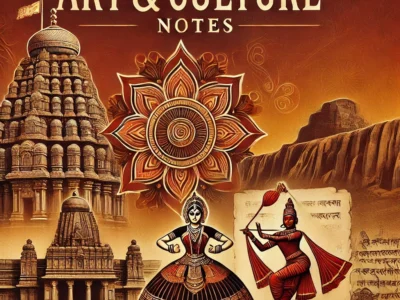Course Features
- Lectures 240
- Quiz 0
- Duration 366 days
- Skill level All levels
- Students 0
- Assessments Yes
- 2 Sections
- 240 Lessons
- 366 Days
Expand all sectionsCollapse all sections
- Anthropology Paper 01145
- 1.1Lesson 01 Meaning, scope and development of Anthropology
- 1.2Lesson 02 Relationships with other disciplines
- 1.3Lesson 03 Relationships with behavioural Sciences
- 1.4Lesson 04 Relationships with Life Sciences
- 1.5Lesson 05 Relationships with Medical Sciences
- 1.6Lesson 06 Relationships with Earth Sciences
- 1.7Lesson 07 Relationships with Humanities
- 1.8Lesson 08 Relationships with Humanities
- 1.9Lesson 09 Main branches of Anthropology, theirscope and relevance
- 1.10Lesson 10 Main branches of Anthropology, theirscope and relevance
- 1.11Lesson 11 Human Evolution and emergence of Man
- 1.12Lesson 12 Theories of Organic Evolution (Pre Darwinian, Darwinian and Post-Darwinian)
- 1.13Lesson 12.1 Synthetic theory of evolution
- 1.14Lesson 13 Characteristics of Primates
- 1.15Lesson 14 Primate Adaptations; (Arboreal and Terrestrial)
- 1.16Lesson 15 Primate Behaviour
- 1.17Lesson 16 Tertiary and Quaternary fossil primates
- 1.18Lesson 17 Living Major Primates
- 1.19Lesson 18 Comparative Anatomy of Man and Apes
- 1.20Lesson 19 Skeletal changes due to erect posture and its implications.
- 1.21Lesson 20 Plio-pleistocene hominids in South and East Africa – Australopithecines
- 1.22Lesson 21 Homo erectus
- 1.23Lesson 22 Neanderthal man
- 1.24Lesson 23 Rhodesian man
- 1.25Lesson 24 Homo sapiens
- 1.26Lesson 25 cell
- 1.27Lesson 26 DNA structure and replication
- 1.28Lesson 27 Protein Synthesis
- 1.29Lesson 28 Gene and chromosome
- 1.30Lesson 29 cell division
- 1.31Lesson 30 Principles of prehistoric archeology
- 1.32Lesson 31 Paleolithic
- 1.33Lesson 32 Mesolithic
- 1.34Lesson 33 Neolithic
- 1.35Lesson 34 Chalcolithic Culture world
- 1.36Lesson 35 Copper-Bronze Age
- 1.37Lesson 36 Iron Age
- 1.38Lesson 37 Concept of culture
- 1.39Lesson 38 Concept and characteristics of civilization
- 1.40Lesson 39 Ethnocentrism and cultural Relativism.
- 1.41Lesson 40 Concept of Society
- 1.42Lesson 41 Society and Culture
- 1.43Lesson 42 Social Institutions
- 1.44Lesson 43 Social groups
- 1.45Lesson 44 Social Stratification
- 1.46Lesson 45 Marriage – Definition and universality
- 1.47Lesson 46 Laws of marriage
- 1.48Lesson 47 Types of marriage
- 1.49Lesson 48 Functions of Marriage
- 1.50Lesson 49 Marriage regulations
- 1.51Lesson 50 Marriage payments
- 1.52Lesson 51 Family – Definition and universality
- 1.53Lesson 52 Family, household and domestic groups
- 1.54Lesson 53 Functions of family
- 1.55Lesson 54 Types of family
- 1.56Lesson 55 Impact of urbanization, industrialization and feminist movements on family
- 1.57Lesson 56 KINSHIP consanguinity and affinity
- 1.58Lesson 57 Principles and types of descent
- 1.59Lesson 58 Forms of descent groups
- 1.60Lesson 59 KINSHIP TERMINOLOGY
- 1.61Lesson 60 Descent, Filiation and Complimentary Filiation
- 1.62Lesson 61 Descent and Alliance
- 1.63Lesson 62 Meaning, scope and relevance of economic anthropology
- 1.64Lesson 63 Formalist and Substantivist debate
- 1.65Lesson 64 Reciprocity, redistribution and market
- 1.66Lesson 65 subsisting on hunting and gathering, fishing, swiddening, pastoralism, horticulture, and agriculture
- 1.67Lesson 66 Globalisation and indigenous economic systems
- 1.68Lesson 67 Political Organisation (Band, Tribe, Chiefdom and State)
- 1.69Lesson 68 Concepts of power, authority and legitimacy
- 1.70Lesson 69 Social control, law and justice in simple societies
- 1.71Lesson 70 Anthropological approaches to the study of religion
- 1.72Lesson 71 Monotheism and Polytheism
- 1.73Lesson 72 Sacred and Profane
- 1.74Lesson 73 MYTHS AND RITUALS
- 1.75Lesson 74 Forms of religion in tribal and peasant societies
- 1.76Lesson 75 Religion, magic and science distinguished
- 1.77Lesson 76 Magico-religious functionaries
- 1.78Lesson 77 Classical evolutionism
- 1.79Lesson 78 Historical particularism
- 1.80Lesson 79 Diffusionism
- 1.81Lesson 80 Functionalism (Malinowski)
- 1.82Lesson 81 Structural-Functionalism (Radcliffe-Brown)
- 1.83Lesson 82 Structuralism
- 1.84Lesson 83 Culture and personality
- 1.85Lesson 84 Cultural materialism
- 1.86Lesson 85 Symbolic and Interpretive Theories
- 1.87Lesson 86 Cognitive Anthropology
- 1.88Lesson 87 Post-modernism in anthropology
- 1.89Lesson 88 Multilinear Evolutionism (julian steward)
- 1.90Lesson 89 NATURE, ORIGIN AND CHARACTERISTICS OF LANGUAGE
- 1.91Lesson 90 Verbal and non-verbal communication
- 1.92Lesson 91 Social context of language use
- 1.93Lesson 92 Fieldwork tradition in anthropology
- 1.94Lesson 93 Distinction between technique, method and methodology
- 1.95Lesson 94 Tools of data collection
- 1.96Lesson 95 Analysis, interpretation and presentation of data
- 1.97Lesson 96 METHODS AND APPLICATIONS FOR THE STUDY OF GENETIC PRINCIPLES IN MAN FAMILY STUDY
- 1.98Lesson 97 Biochemical methods
- 1.99Lesson 98 Immunological methods
- 1.100Lesson 99 D.N.A. technology and recombinant technologies
- 1.101Lesson 100 Mendelian genetics in man-family study
- 1.102Lesson 101 Single factor, multifactor inheritance and polygenic inheritance
- 1.103Lesson 102 Lethal and Sub lethal genes
- 1.104Lesson 103 Concept of genetic polymorphism and selection
- 1.105Lesson 104 Mendelian population, HardyWeinberg law
- 1.106Lesson 105 Causes and changes which bring down frequency – mutation, isolation, migration, selection, inbreeding and genetic drift
- 1.107Lesson 106 Consanguineous and non-consanguineous mating, genetic load, genetic effect of consanguineous and cousin marriages
- 1.108Lesson 107 Chromosomes
- 1.109Lesson 108 Numerical and Structural Aberrations
- 1.110Lesson 109 Sex chromosomal aberrations
- 1.111Lesson 110 Autosomal aberrations
- 1.112Lesson 111 Genetic imprints in human disease, genetic screening, genetic counseling, human DNA profiling, gene mapping and genome study
- 1.113Lesson 112 Race and racism
- 1.114Lesson 113 Biological basis of morphological variation of non-metric and metric characters
- 1.115Lesson 114 Racial criteria, racial traits in relation to heredity and environment
- 1.116Lesson 115 Biological basis of racial classification
- 1.117Lesson 116 Racial differentiation and race crossing in man
- 1.118Lesson 117 Genetic marker
- 1.119Lesson 118 Physiological characteristics
- 1.120Lesson 119 Concepts of Ecological Anthropology
- 1.121Lesson 120 Methods of Ecological Anthropology
- 1.122Lesson 121 Bio-cultural Adaptations
- 1.123Lesson 122 Mans physiological responses to cold stress
- 1.124Lesson 123 Epidemiological Anthropology
- 1.125Lesson 124 Health and Disease
- 1.126Lesson 125 Infectious and non-infectious diseases
- 1.127Lesson 126 Nutritional deficiency-related diseases
- 1.128Lesson 127 Concept of growth and development
- 1.129Lesson 128 Stages of growth
- 1.130Lesson 129 FACTORS AFFECTING GROWTH AND DEVELOPMENT
- 1.131Lesson 130 AGEING AND SENESCENCE
- 1.132Lesson 131 THEORIES AND OBSERVATIONS
- 1.133Lesson 132 Biological and chronological longevity
- 1.134Lesson 133 Human Physique and Somatotypes
- 1.135Lesson 134 METHODOLOGIES FOR GROWTH STUDIES
- 1.136Lesson 135 Relevance of menarche and menopause to fertility
- 1.137Lesson 136 Fertility patterns and differentials
- 1.138Lesson 137 Demographic theories
- 1.139Lesson 138 Biological and socio-ecological factors influencing mortality
- 1.140Lesson 139 Anthropology of sports
- 1.141Lesson 140 Nutritional anthropology
- 1.142Lesson 141 Anthropology in designing of defence and other equipments
- 1.143Lesson 142 Forensic Anthropology
- 1.144Lesson 143 Methods and principles of personal identification and reconstruction
- 1.145Lesson 144 Applied Human Genetics
- Anthropology Paper 0295
- 2.1Lesson 146 Prehistoric cultures
- 2.2Lesson 147 Harappan Civilisation
- 2.3Lesson 148 Post-Harappan cultures
- 2.4Lesson 149 Contributions of the tribal cultures to Indian civilization.
- 2.5Lesson 150 Ramapithecus
- 2.6Lesson 151 Sivapithecus
- 2.7Lesson 152 Shiwalik man
- 2.8Lesson 153 Narmada man
- 2.9Lesson 154 Concept of ethno-archaeology
- 2.10Lesson 155 Ethno-archaeology in India
- 2.11Lesson 156 Survivals and Parallels
- 2.12Lesson 157 Ethnic elements of India
- 2.13Lesson 158 Linguistic elements of India
- 2.14Lesson 159 Indian population—factors influencing its structure and growth
- 2.15Lesson 160 Varnashrama system
- 2.16Lesson 161 Purushartha
- 2.17Lesson 162 Karma
- 2.18Lesson 163 Rina and Rebirth
- 2.19Lesson 164 Structure and characteristics Varna and caste
- 2.20Lesson 165 Theories of origin of caste system
- 2.21Lesson 166 Dominant caste
- 2.22Lesson 167 Caste mobility
- 2.23Lesson 168 Future of caste system
- 2.24Lesson 169 Jajmani system
- 2.25Lesson 170 Tribe-case continuum
- 2.26Lesson 171 Sacred Complex
- 2.27Lesson 172 Nature man spirit complex
- 2.28Lesson 173 Impact of Buddhism on Indian society
- 2.29Lesson 174 Impact of Jainism, Islam on indian society
- 2.30Lesson 175 Impact of Christianity on Indian society.
- 2.31Lesson 176 Emergence, growth and development in India
- 2.32Lesson 177 Contributions of the 18th, 19th and early 20th Century scholar-administrators
- 2.33Lesson 178 Contribution of Indian anthropologists
- 2.34Lesson 179 Significance of village study in India
- 2.35Lesson 180 Indian village as a social system
- 2.36Lesson 181 Traditional and changing patterns of settlement
- 2.37Lesson 182 Agrarian relations in Indian villages
- 2.38Lesson 183 Impact of globalization on Indian villages
- 2.39Lesson 184 Linguistic minorities
- 2.40Lesson 185 Religious minorities
- 2.41Lesson 186 Indigenous processes of socio-cultural change
- 2.42Lesson 187 Sanskritization
- 2.43Lesson 188 Westernization
- 2.44Lesson 189 Modernization
- 2.45Lesson 190 Inter-play of little and great traditions
- 2.46Lesson 191 Panchayati Raj and social change
- 2.47Lesson 192 Media and Social change
- 2.48Lesson 193 Tribal situation in India
- 2.49Lesson 194 Tribal populations and their distribution
- 2.50Lesson 195 Bio-genetic variability
- 2.51Lesson 196 Linguistic characteristics of the tribal populations
- 2.52Lesson 197 Socio-economic characteristics of the tribal populations
- 2.53Lesson 198 Land alienation
- 2.54Lesson 199 Poverty and indebtedness
- 2.55Lesson 200 Low literacy and poor educational facilities
- 2.56Lesson 201 Unemployment and Under-employment
- 2.57Lesson 202 Health and nutrition
- 2.58Lesson 203 Developmental projects and their impact on tribal displacement
- 2.59Lesson 204 Developmental projects and problems of rehabilitation.
- 2.60Lesson 205 Development of forest policy
- 2.61Lesson 206 Impact of urbanization, industrialization and feminist movements on family
- 2.62Lesson 207 Exploitation and deprivation of Scheduled Castes
- 2.63Lesson 208 Exploitation and deprivation of Scheduled Tribes
- 2.64Lesson 209 Constitutional safeguards for Scheduled Castes
- 2.65Lesson 210 Constitutional safeguards for Scheduled Tribes
- 2.66Lesson 211 Contemporary tribal societies
- 2.67Lesson 212 Impact of modern democratic institutions
- 2.68Lesson 213 Development programmes and welfare measures
- 2.69Lesson 214 The concept of ethnicity
- 2.70Lesson 215 Ethnic conflicts and political developments
- 2.71Lesson 216 Unrest among tribal communities
- 2.72Lesson 217 Regionalism and demand for autonomy
- 2.73Lesson 218 Pseudo-tribalism
- 2.74Lesson 219 Tribes during colonial period
- 2.75Lesson 220 Social change among the tribes during post-Independent India
- 2.76Lesson 221 Impact of hinduism on tribes
- 2.77Lesson 222 Impact of buddhism on tribes
- 2.78Lesson 223 Impact of christianity on tribes
- 2.79Lesson 224 Impact of islam on tribes
- 2.80Lesson 225 Impact of other religions on tribes
- 2.81Lesson 226 TRIBE AND NATION STATE
- 2.82Lesson 227 Tribes during colonial period
- 2.83Lesson 228 History of administration of tribal areas
- 2.84Lesson 229 History of tribal policies
- 2.85Lesson 230 History of tribal plan
- 2.86Lesson 231 History of tribal programmes
- 2.87Lesson 232 Implementation of policies, plans, programmes of tribal development
- 2.88Lesson 233 Concept of PTGs (Primitive Tribal Groups)
- 2.89Lesson 234 PVTG distribution
- 2.90Lesson 235 Special programmes for PVTG development
- 2.91Lesson 236 Role of N.G.O.s in tribal development
- 2.92Lesson 237 Role of Anthropology in tribal and rural development
- 2.93Lesson 238 Contributions of anthropology to the understanding of regionalism
- 2.94Lesson 239 Contributions of anthropology to understanding of communalism
- 2.95Lesson 240 Contributions of anthropology to ethnic and political movements

